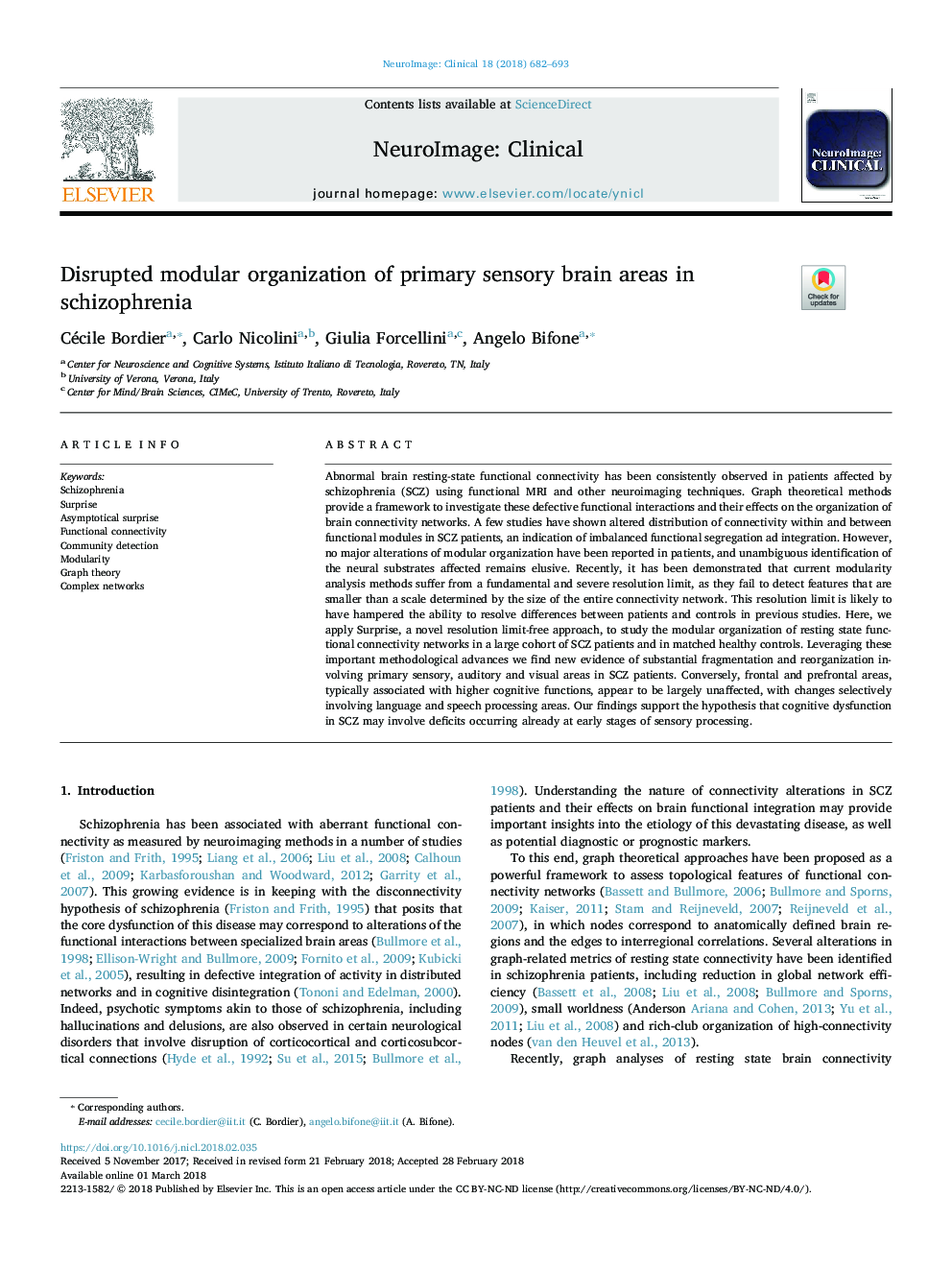| Article ID | Journal | Published Year | Pages | File Type |
|---|---|---|---|---|
| 8687981 | NeuroImage: Clinical | 2018 | 12 Pages |
Abstract
Abnormal brain resting-state functional connectivity has been consistently observed in patients affected by schizophrenia (SCZ) using functional MRI and other neuroimaging techniques. Graph theoretical methods provide a framework to investigate these defective functional interactions and their effects on the organization of brain connectivity networks. A few studies have shown altered distribution of connectivity within and between functional modules in SCZ patients, an indication of imbalanced functional segregation ad integration. However, no major alterations of modular organization have been reported in patients, and unambiguous identification of the neural substrates affected remains elusive. Recently, it has been demonstrated that current modularity analysis methods suffer from a fundamental and severe resolution limit, as they fail to detect features that are smaller than a scale determined by the size of the entire connectivity network. This resolution limit is likely to have hampered the ability to resolve differences between patients and controls in previous studies. Here, we apply Surprise, a novel resolution limit-free approach, to study the modular organization of resting state functional connectivity networks in a large cohort of SCZ patients and in matched healthy controls. Leveraging these important methodological advances we find new evidence of substantial fragmentation and reorganization involving primary sensory, auditory and visual areas in SCZ patients. Conversely, frontal and prefrontal areas, typically associated with higher cognitive functions, appear to be largely unaffected, with changes selectively involving language and speech processing areas. Our findings support the hypothesis that cognitive dysfunction in SCZ may involve deficits occurring already at early stages of sensory processing.
Keywords
Related Topics
Life Sciences
Neuroscience
Biological Psychiatry
Authors
Cécile Bordier, Carlo Nicolini, Giulia Forcellini, Angelo Bifone,
